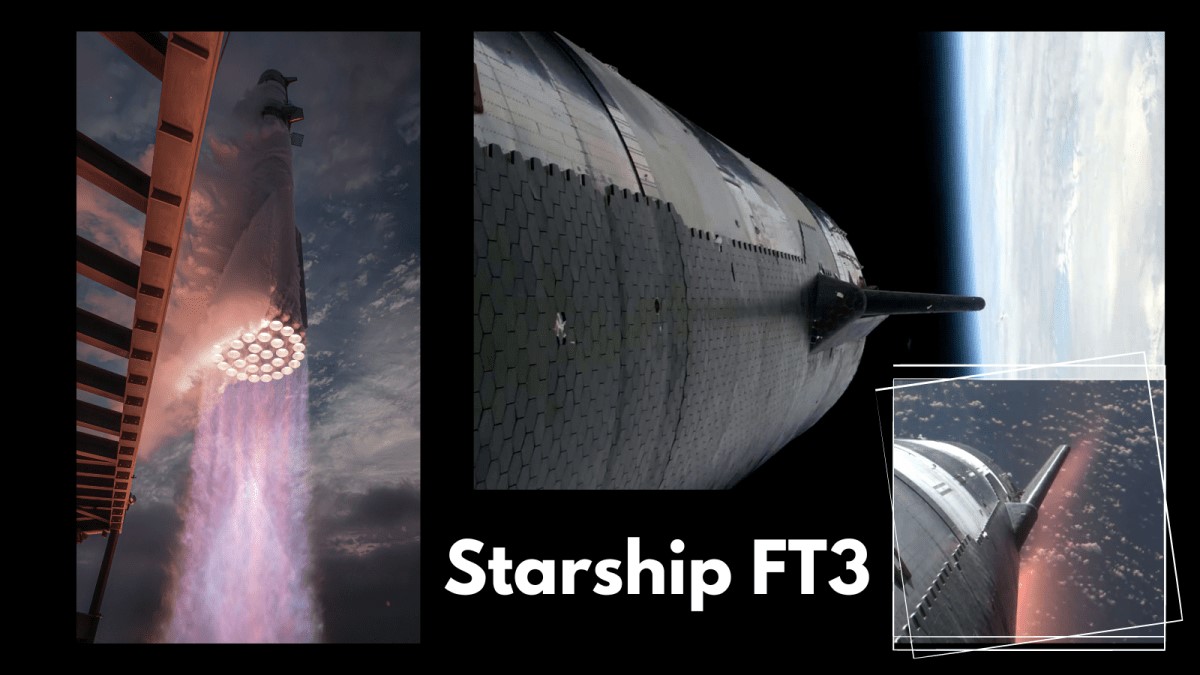
We enthusiastically followed the Starship launch and space operations with our Space Renaissance International community and friends, on the Space Renaissance YouTube channel. This historical Starship team achievement inspires us to further engage in boosting Civilian Space Development, the Space 18th SDG, Space For All, on Earth and Beyond!
On the 14th of March 2024, Space X successfully launched Starship 28 and Booster 10. for the first time, Starship reached orbital altitude (234 km) and orbital speed (>26200 km/h) . Many congratulations to Elon Musk and all of the “out of this word” Space X team, for the wonderful success of the Starship Flight Test 3!
While some incredibly poor journalism keeps referring to the Starship’s tests as a “failure”, development of the first fully reusable space vehicle is proceeding safely and expeditiously.
Another advantage of this method is its considerable flexibility. If a project lasts 10 years, it is difficult to take advantage of the technological advances. Adopting a new technology in a project initiated many years ago mandates heavy requirements reviews and leads to unavoidable delays. In a fail-and-repeat project, new technologies and new ideas can be adopted more easily and more quickly, as demonstrated by the thousands of changes and improvements applied to the different starships, super-heavy boosters, and raptor engine prototypes throughout history. The misfortune bearers and the envious notwithstanding, the methodology works — as underscored by the success of Space X in the launchers market!
Starship 28 and the Super-Heavy Booster 10 achieved even more than what was expected: while a suborbital altitude was planned, the Starship spacecraft reached 230 km, a low Earth orbit altitude, at more than 26,200 km/h. Several tests were conducted after the engine cutoff, including a propellant transfer demo and a payload dispenser test.
Only two operations failed. The booster couldn’t make it to descend vertically on its engines (as only 3 of them reignited), and splashed in the Mexican Gulf at little more than 1000 km/h. Starship failed during the re-entry in the atmosphere and the Indian Ocean. We could observe many insulating tiles flying away from Starship’s body during the first part of the re-entry. At an altitude of 65 km, telemetry from Ship 28 was lost, and the vehicle was destroyed before splashing in the sea.
The failure of the re-entry was expected, by Space X. For sure the designers will undoubtedly learn much from these failures, as they have from the previous ones!
Space Renaissance International, together with the National Space Society and more than 70 space advocacy organizations and universities promotes an 18th Sustainable Development Goal, focused on Civilian Space Development to be added to the U.N. 2030 Agenda. Everybody is invited to join the #Space18SDG Coalition!
The rapid progress of fully reusable launch vehicles increasingly makes space the key factor enabling the sustainable development of humanity
We are eager to see the promised other 4 or 5 launches of Starship in 2024.
GO Starship! GO!
Bernard Foing, SRI President
Adriano V. Autino, SRI CEO and Founder
[English language edit by Jim Crisafulli]
Want to discuss this? You can do it on the SRI Open Forum: https://groups.google.com/g/sri-open-forum/c/PNNfhW_cU6Q
Sign the Space 18th SDG Petition online https://www.change.org/space18sdg
Join the Space 18th SDG Coalition https://spacerenaissance.space/sign-the-18th-sdg/
Stay tuned with the campaign for Space 18th SDG: https://space18thsdg.space/
Join the SRI Crew: https://spacerenaissance.space/membership/international-membership-registration/
Donate some money: https://spacerenaissance.space/donate-to-space-renaissance/
Watch and subscribe to the Space Renaissance YouTube channel: https://www.youtube.com/@spacerenaissance
Follow the lecture by Armen Papazian “The Monetary Foundations of a Spacefaring Species”, on the Space Renaissance YouTube Channel, Monday 18 March: https://www.youtube.com/live/nJMFd098aYo









 Space Renaissance France (French Chapter of SRI)
Space Renaissance France (French Chapter of SRI)  Space Renaissance USA, Inc. (USA Chapter of SRI)
Space Renaissance USA, Inc. (USA Chapter of SRI) Space Renaissance (Italian Chapter of SRI)
Space Renaissance (Italian Chapter of SRI) Space Renaissance Academy
Space Renaissance Academy Space Renaissance Initiative Group
Space Renaissance Initiative Group